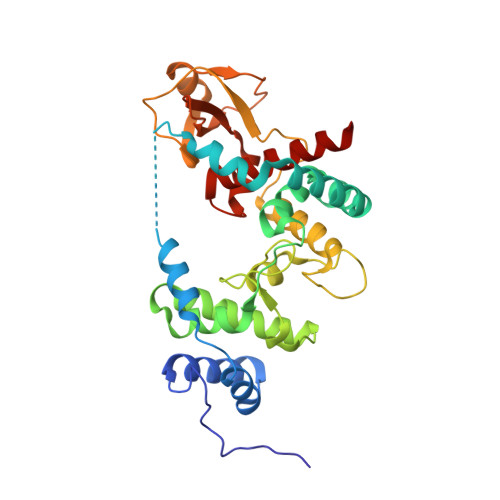Crystallographic studies of the interactions of Escherichia coli lytic transglycosylase Slt35 with peptidoglycan.
van Asselt, E.J., Kalk, K.H., Dijkstra, B.W.(2000) Biochemistry 39: 1924-1934
- PubMed: 10684641
- DOI: https://doi.org/10.1021/bi992161p
- Primary Citation of Related Structures:
1D0K, 1D0L, 1D0M - PubMed Abstract:
Lytic transglycosylases catalyze the cleavage of the beta-1, 4-glycosidic bond between N-acetylmuramic acid (MurNAc) and N-acetylglucosamine (GlcNAc) in peptidoglycan with concomitant formation of a 1,6-anhydro bond in the MurNAc residue. To understand the reaction mechanism of Escherichia coli lytic transglycosylase Slt35, three crystal structures have been determined of Slt35 in complex with two different peptidoglycan fragments and with the lytic transglycosylase inhibitor bulgecin A. The complexes define four sugar-binding subsites (-2, -1, +1, and +2) and two peptide-binding sites in a large cleft close to Glu162. The Glu162 side chain is between the -1 and +1 sugar-binding sites, in agreement with a function as catalytic acid/base. The complexes suggest additional contributions to catalysis from Ser216 and Asn339, residues which are conserved among the MltB/Slt35 lytic transglycosylases.
Organizational Affiliation:
BIOSON Research Institute, Laboratory of Biophysical Chemistry, University of Groningen, Nijenborgh 4, 9747 AG Groningen, The Netherlands.



















